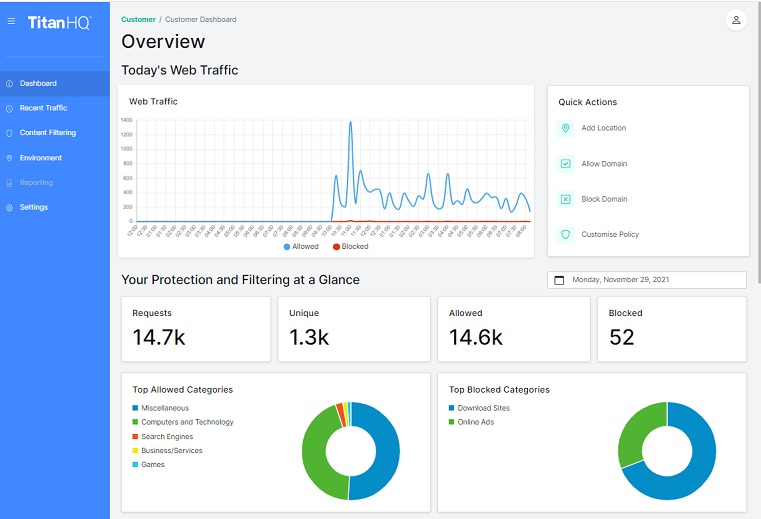
SSL stands for Secure Sockets Layer. It protects the website and diverts communication through a secure channel using sophisticated encryption keys. The SSL handshake signal decrypts the communication at the data or user ends. This handshake confirms that the communication is encrypted.
Secure Sockets
Secure Sockets Layer, also known as SSL, is a protocol for encrypting a connection between a client and a server. To encrypt and decrypt data, two keys are required - one public, one only known by the sender. SSL-enabled web sites are marked with HTTPS in URLs. The server will provide a trusted certificate that includes a public-key public key if a user requests encrypted session from a secured site.
To encrypt data between the client and server, the protocol uses asymmetric-key algorithm. The keys generated with symmetric encryption can be used for every connection. This is unlike other encryption methods. Client and server negotiate the encryption details prior to the transmission of the first byte. This makes encryption reliable and secure.
Function
SSL is a security protocol which encrypts information that is being transferred between a website's users and the site itself. This means that only the intended recipient has access to the data. This is a fantastic feature if you need to share sensitive data online. This makes it almost impossible to intercept such information from hackers. SSL is essential for websites.

SSL creates a secure link by creating a trusted connection between web servers and web browsers. It does this via recognizing the certificate on a website server and then sending it to a browser. The browser authenticates the certificate. The browser will send a digitally signed acknowledgment back to confirm that it is valid. This will allow you to establish an SSL encrypted session. The encrypted data is sent between the browsers and the web servers.
Types
There are two types of SSL certificates: self-signed and third-party. A self-signed certificate provides data encryption, and adds HTTPS as an address bar. But, a self-signed certificate can be forged by anyone without being verified. When browsing self-signed websites, most browsers will display warning messages.
SSL certificates can be installed on one or more web servers and used to validate domains. They can also help to secure a website. SSL certificates can be used to secure multiple domains and subdomains.
Importance
SSL stands for Secure Sockets Level and secures communication between computers. This secure connection stops computers between the servers and the users from detecting or intercepting data. One example of this is when a visitor to a website fills out a form with their personal details. Without SSL, this data could be intercepted by hackers and identity thieves. Therefore, all websites should be secured with SSL to ensure the safety of the sensitive data of their visitors.
Google's rankings can also be affected by SSL. Google is constantly updating its ranking algorithm. SSL may give your website a slight boost on search engine rankings. SSL can make your site more trustworthy. Chrome, for example, will display a warning message when your site isn’t secure. It’s therefore important to have an SSL certificate.

Get a certificate
A certificate for SSL security is an important step to protect your website. SSL certificates provide information about the site's owner, including its public key, serial numbers, expiration dates, and the digital signature from the certifying authority. These certificates verify your site's legitimacy and serve to authenticate it. Look for the HTTPS at the URL to verify the certificate.
You can easily install an SSL certificate to your site using certain CMS platforms. HubSpot CMS offers a free SSL. It also takes care of renewing the SSL certificate. It will take place 30 days before the SSL certificate expires.
FAQ
What HTML & CSS can I use to create my website?
Yes, you can! It is possible with basic knowledge of web design, programming languages like HTML (Hyper Text Markup Language), CSS (Cascading style Sheets), and HTML (Hyper Text Markup Language). These languages allow you create websites that can be viewed by anyone with internet access.
Should I hire a web designer or do it myself?
If you want to save cash, don't pay for web designer services. But if you want quality results, then hiring someone else to create your website may not be worth the cost.
You can build websites yourself without paying for professional designers.
If you're willing put in the work, you can create a website that looks great using tools like Dreamweaver.
You might also consider outsourcing your project to an experienced freelance web developer who charges by the hour instead of per-project.
WordPress is it a CMS?
Yes. It's a Content Management System. Instead of using Dreamweaver or Frontpage, a CMS lets you manage your website content directly from your web browser.
WordPress is free! Other than hosting, which you usually get from your ISP.
WordPress was originally designed to be a blogging platform. However, WordPress now offers many options including eCommerce sites and forums, membership websites, portfolios and portfolios.
WordPress is simple to install and configure. You must download the installation file from their website and upload it onto your server. After that, you can simply access your domain name with your web browser.
After installing WordPress, you'll need to register for a username and password. Once you've logged in, you'll see a dashboard where you can access all of your settings.
From here, you can add pages, posts, images, links, menus, widgets, and plugins. If editing and creating new content is easier for you, skip this step.
You can also hire a professional web design firm to help you with the whole process.
What is responsive web design?
Responsive web design (RWD), is a way to create websites that display responsively on all devices, including smartphones, tablets, desktop computers, laptops and tablets. This allows visitors to view the website on one device and access other features like buttons, navigation menus, etc. RWD aims to ensure that every user who views a site is able to view it on any screen size.
You would, for example, want to make sure that a customer can view your website even on a mobile device.
Responsive websites will adjust their layout according to the device that is being used. It will appear the same as a regular desktop website if you view it on your laptop. But, the page will appear differently if you view it on your phone.
This allows you to create one website that works on all devices.
What is a static web site?
A static site is one that stores all content on a server. Visitors can access the website via web browsers.
The term "static", as it is sometimes called, refers not to dynamic features such changing images, videos, animations, etc.
This site was originally intended for corporate intranets. However it has since been adopted and modified by small businesses and individuals who require simple websites without complex programming.
Static sites have become increasingly popular because they require less maintenance. They're easier to update and maintain when compared to a fully-featured website with many different components (such as blogs).
They also tend to load faster than their dynamic counterparts. This makes them ideal for users on mobile devices or those with slow Internet connections.
Also, static websites are more secure that dynamic counterparts. It is difficult to hack into static websites. Hackers have only access to data stored in a database.
There are two main ways you can create a static web site.
-
Using a Content Management System (CMS)
-
Creating a Static HTML Website
It depends on what your needs are. A CMS is the best choice for anyone who is new to building websites.
Why? Because it allows you to have full control over your website. A CMS eliminates the need for a professional to set up your site. You just need to upload files to your web server.
Still, you can learn to code and create static websites. But you'll need to invest some time learning how to program.
Statistics
- Studies show that 77% of satisfied customers will recommend your business or service to a friend after having a positive experience. (wix.com)
- It's estimated that in 2022, over 2.14 billion people will purchase goods and services online. (wix.com)
- When choosing your website color scheme, a general rule is to limit yourself to three shades: one primary color (60% of the mix), one secondary color (30%), and one accent color (10%). (wix.com)
- It's estimated that chatbots could reduce this by 30%. Gone are the days when chatbots were mere gimmicks – now, they're becoming ever more essential to customer-facing services. (websitebuilderexpert.com)
- Did you know videos can boost organic search traffic to your website by 157%? (wix.com)
External Links
How To
What is Website Hosting?
Website hosting is the location where people go when they visit websites. There are two types.
-
The cheapest option is shared hosting. Your website files reside on a server owned by someone else. Customers visit your website and send their requests over the Internet to this server. The request is sent to the server's owner who then passes it on to you.
-
Dedicated Hosting - This option is the most costly. Your website is hosted entirely on one server. You and your traffic are protected by the fact that no other websites share server space.
Because shared hosting is more affordable than dedicated hosting, most businesses opt for it. You can use shared hosting if the company owns the server to provide the resources required for your website.
However, both have their advantages and disadvantages. These are the key differences between them.
Shared Hosting Pros:
-
Lower Cost
-
Easy to Setup
-
Frequent Updates
-
It can Be Found On Many Web Hosting Companies
Shared hosting is often as cheap as $10 per month. Keep in mind, however, that bandwidth is usually included in the price. Bandwidth is how much data you can transfer to the Internet. You may have to pay extra for large amounts of data, even if your blog only contains photos.
Once you start, you'll quickly realize why you were paying so much for your previous host. Most shared hosts have very poor customer support. While they may occasionally assist you in setting up your site and other tasks, after that you are all on your own.
A provider with 24-hour telephone support is a good choice. They will assist you with any problems that may arise while you're sleeping.
Dedicated Hosting Cons:
-
More Expensive
-
Less Common
-
Requires specific skills
You're getting everything you need with dedicated hosting to operate your website. You don't need to worry about bandwidth usage or RAM (random access memory).
This means that upfront, you'll need to spend a bit more. But once your online business starts, you'll realize you don't need any technical assistance. You'll soon be an expert at managing servers.
Which Is Better For My Business, So Which Is Better?
The answer to this question depends on which type of website you wish to create. Shared hosting is best for those who only need to sell products. It is simple to set up and easy to maintain. It's easy to set up and maintain, as you share a server with other sites. You will likely be updated frequently.
If you want to create a community around a brand, dedicated hosting may be the best choice. It allows you to focus on building your brand and not worrying about managing your traffic.
Bluehost.com is a web host that offers both. They offer unlimited monthly data transfers, 24/7 support, free domain name registration, and a 30-day money-back guarantee.